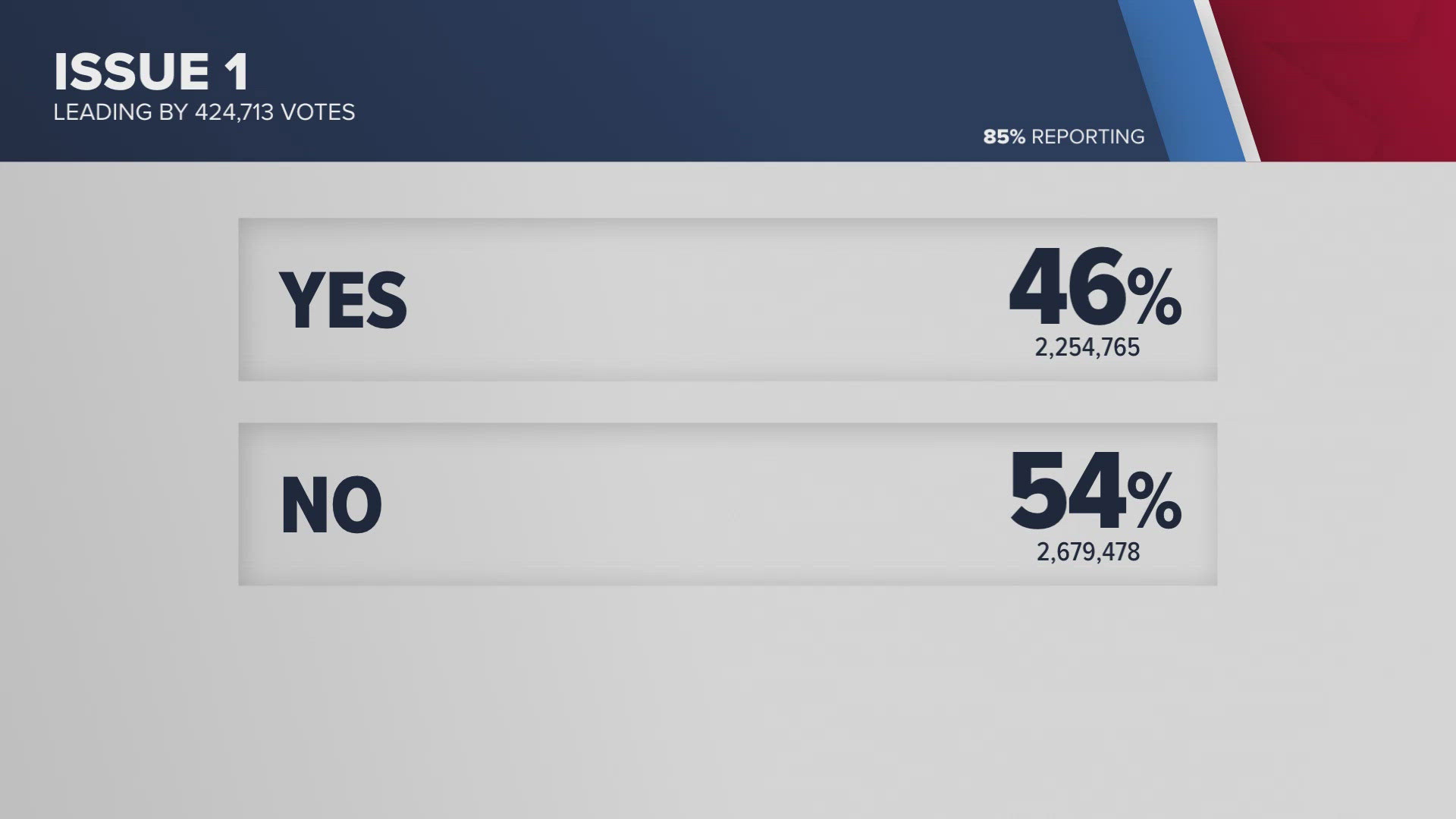CLEVELAND — Ohio Issue 1 has captured lots of attention — but did it pass or fail?
We got our answer just before 11:30 p.m., with The Associated Press projecting the proposed constitutional amendment failed by a relatively significant margin. Passage of Issue 1 would have create a citizen’s commission made up of five Republicans, five Democrats and five independents. Lawmakers on the state ballot board would choose four retired Ohio judges — two from each major party — who would then choose the 15 members from a demographic and geographic cross section of the state. Politicians, lobbyists and party officials would not be allowed serve on the commission.
Defeat of Issue 1 now keeps the mapmaking process in the hands of the current Ohio Redistricting Commission made up of seven elected officials: Two Democrats and two Republicans in the Ohio Statehouse, plus the governor, secretary of state and auditor. The commission was created by an amendment to the Ohio Constitution, which 71% of Ohio voters approved in November 2015.
With Republicans currently holding large majorities in both the Ohio House and Senate, the Redistricting Commission swings 5-2 in favor of the GOP. Following the latest census count in 2020, members pushed through several maps that state and federal courts found to be unconstitutionally slanted toward Republicans, and the 2022 General Assembly races even went ahead with districts that judges admitted were technically not lawful.
Ohio Issue 1 was proposed by Citizens Not Politicians, a bipartisan campaign whose aim, it said, is to end gerrymandering in Ohio.
The group sued the Ohio Ballot Board, who approved the language that appeared on the ballot. Citizens Not Politicians has called the language on the ballot biased and claims it describes the opposite of its intentions.
The Ohio Supreme Court upheld the language in a September ruling.

